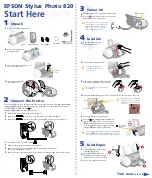
XEROX WorkCentre 7755/7765/7775 Information Assurance Disclosure Paper
24
Ver. 1.01, April 2010
Page
24 of 40
The communication process uses a Xerox proprietary protocol. Each packet passing back and forth will have a
unique identifier (session key) with it for authentication and tracking purposes. All protocols are API based –
very little information
is directly transferred. For example, in order to run any given diagnostic test, the ‘Start Test XXX’
command is sent to the Marking Engine. The Marking Engine runs the test and responds with a “Test XXX passed (or failed)’
reply. This is illustrated in the following diagram:
3.4.4.3.
Network Diagnostics executed from the PSW
The PSW allows the technician to execute certain Network diagnostic tests by connecting directly to the serial port on the
Network Controller. These tests are executed with the device disconnected from the customer’s LAN.
The tests that are available are echo tests for the various protocols (e.g. IP, IPX), where the Network Controller
sends a dummy message to itself to test the transmit and receive capabilities of its own connectivity stacks.
Each protocol is tested individually and each test must be invoked separately. The diagnostic sequence is as
follows:
1)
After the PSW and Marking Engine have established a connection, the PSW must send the
expected synchronization message to the machine.
2)
The Marking Engine will respond with an acknowledge message containing its serial number.
3)
The PSW will send a request for Diagnostic service and a password.
4)
Assuming the password is authentic, the Marking Engine will either execute a Marking Engine
diagnostic, or else forward the diagnostic request to the Network Controller. If this is a network
diagnostic, the Network Controller will execute the diagnostic and report results back to the
Marking Engine.
5)
The Marking Engine will report diagnostic results back to the PSW.
3.4.4.4.
Accessible Data
The only files that are accessible are various log files (fault log, internal event log, complete job log, configuration log and a
debug log). The customer’s network is accessible for diagnostic purposes only. However, there is one diagnostic routine (Get
Network Connectivity Data), where the device will collect data about the network it is on and transmit the data. The CSE is
expected to seek permission from the customer before connecting the device to the LAN and performing this diagnostic.
This Novell test will only collect information for devices on the local network. It will not provide information for
any devices across a router. The following data will be stored on the Network Controller:
•
Frame Type (local network devices only)
Network Controller
Marking Engine
PSW (Laptop computer)
Network
Marking Engine information may be
retrieved; no image data may be accessed
















































